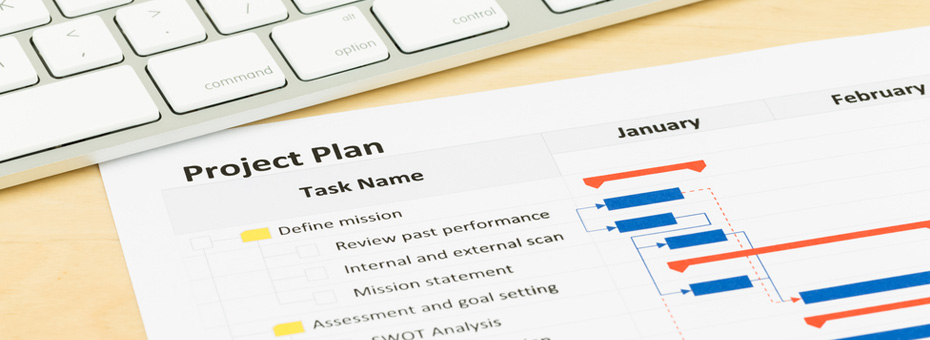The role of most lean tools is to enable problems to be identified or to enable problems to be solved. An important part of being able to identify problems is being able to see them. The harder it is to see the work being done, the harder it is to see the problems in the work being done. But what do you do when the work being done is typically only visible on a computer? This is the case in many office environments and common throughout product and process development.
You can start with identifying the work to be done and making it visible. That is easy to say, but where do you start?
For one, you can start by making the project schedule or plan visible. A common initial reaction to this suggestion is that it isn’t necessary because everyone can already see the schedule on their computers. This is certainly an efficient way for everyone to see the schedule from anywhere, but it often leads to individuals looking at the plan in isolation at their desk or somewhere else. And as such, it misses the biggest benefit of making the work visible – the conversations and interactions it facilitates. The ensuing dialogue about the plan facilitates mutual understanding amongst the different functions involved about how their work fits together to deliver customer value. This isn’t about just understanding the plan, but understanding each other and the impact of decisions and the timing of deliverables on each other, the project, and the customer.
This dialogue also allows for plans to be adjusted as necessary as the cross-functional team decides when they need to be be collaborating, sharing information, and creating new knowledge. This approach can even be taken one step further by enabling the teams to plan their own work in support of project milestones. This pull planning creates ownership of the plan with the team. By making these plans visual and discussing them, the team can identify when they need to synchronize their work and collaborate on both decisions and deliverables to each other and the project.
Now all of this planning is critically important – as Dwight D. Eisenhower said, “Planning is indispensable.” But let’s not forget the first part of Eisenhower’s quote: “Plans are useless.”
What can we do to ensure that these plans aren’t useless? The first step is to track what is actually happening. We need to know when there is a deviation from the plan. It might mean that our plan wasn’t accurate, which we can learn from and improve our planning in the future. Or it could be signaling that there is a problem that needs to be solved, which we want to know about sooner rather than later. Or it could mean that we are learning new information that requires the plan to be adjusted. This enables people to make adjustments to best support the project. If the cross-functional team continues to check and adjust on a regular cadence with dialogue, the benefits of understanding how their work fits together, supports the project, and delivers customer value continue and grow deeper.
For a more in-depth view of how cross-functional collaboration with visibility can enable better product development, check out this case study of an organization that completed a project in 17 months that would have typically taken more than 24 months: Value Stream Mapping and Obeya: Key Enablers for Better Product Development.
Designing the Future
An Introduction to Lean Product and Process Development.






